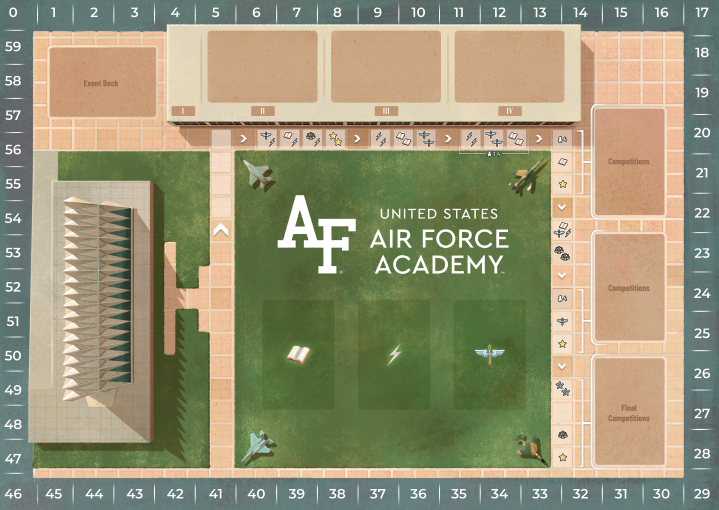Falcons: Prototyping and Playtesting
Designing the Game
Designing Falcons went faster than we originally expected and took a significantly shorter amount of time than Academy, likely due to having experience doing it before. We wanted to develop a new ruleset that was distinct, but still retained some semblance of the previous game. For our first prototype, we tried worker placement with an added a sleep mechanism and action cards. However, we quickly realized that that version of the game was like an Academy 2.0 and not a unique game experience. As a result, we replaced the worker placement with a leapfrogging mechanic, but kept the simultaneous card play as it was often highlighted as the most enjoyable aspect of the game.
Many concepts and mechanics we thought of did not make the final game. For example, in our second version of Falcons, the spaces of the Terrazzo changed each year. We found this implementation was too chaotic and random, so we instead reworked the layout to design the most fun and engaging track for players to move around. After months of work, we finally narrowed down the mechanics of the game and then began to rigorously tweak the final ruleset.
Progression of the Gameboard from Early Prototype to Final Version
Testing the Game
It is impossible to make a board game without constantly testing how it plays. We went through multiple testing phases including individual playtests, group playtests, and rulebook (“blind”) playtests. Each test was an opportunity to try out something new or get feedback from others. Our playtesters provided us with valuable feedback we used to make the game better and more fun. Over the course of development, we conducted over 25 playtests with 43 different players with a variety of board game experience.





